Metal vs Wooden Workbenches
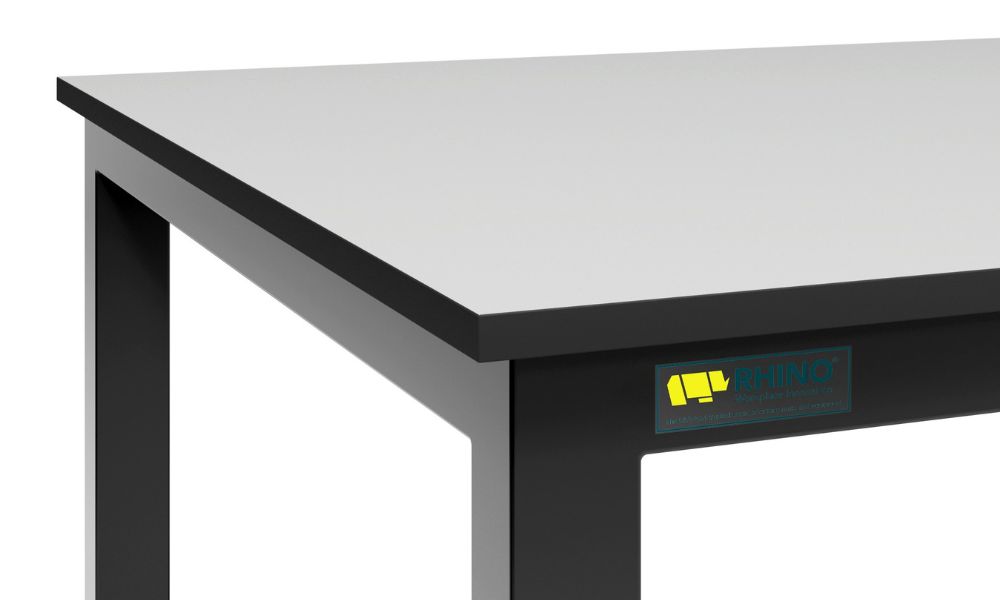
A workbench is more than just a table—it’s the foundation of every great project. Whether you’re a DIY enthusiast, a professional tradesperson, or managing an industrial workspace, the right bench can make all the difference. But when it comes to choosing between a metal workbench and a wooden one, the decision isn’t always straightforward.
Each material has its strengths. A wood vs metal workbench comparison reveals key differences in durability, maintenance, cost, and performance. Metal workbenches excel in heavy-duty environments, while wooden ones offer a sturdy, vibration-absorbing surface ideal for precision tasks.
This comparison breaks down the pros and cons of each, helping you find the best fit for your needs—whether you’re crafting, repairing, or handling industrial work.
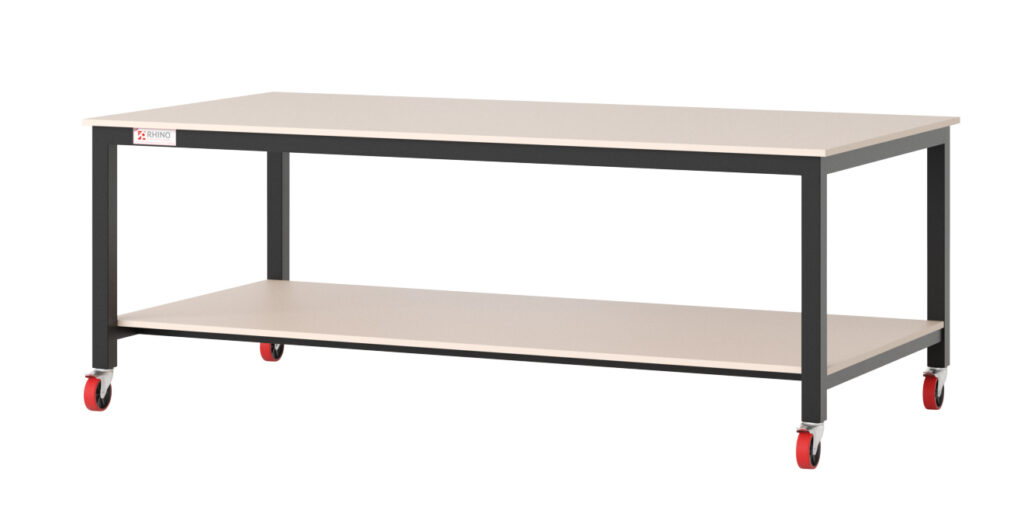
Material Overview: Metal vs. Wooden Workbenches
The material of a workbench determines its strength, durability, and suitability for different tasks.
Metal Workbenches
A metal workbench is typically made from steel, aluminium, or iron. Steel is the most common choice due to its high strength and resistance to wear. Aluminium is lighter and resistant to corrosion, making it ideal for environments where weight is a concern. Iron workbenches are less common but extremely durable. Metal surfaces can be coated with powder or zinc plating to prevent rust and extend lifespan.
Wooden Workbenches
A wood vs metal workbench comparison highlights that wooden workbenches are usually made from solid hardwoods like maple or oak, or engineered wood like plywood. Hardwood provides a dense, durable surface that absorbs vibrations, making it ideal for woodworking and delicate tasks. Plywood is more affordable but less durable.
Performance and Longevity
Metal workbenches excel in heavy-duty environments, supporting high loads and resisting impact damage. Wooden workbenches are sturdy but require more maintenance to prevent warping or cracking. Choosing the right material depends on usage, maintenance preferences, and workspace conditions.
Durability and Strength Comparison
Both materials have their advantages, but they perform differently under heavy use and harsh conditions.
Metal Workbench
A metal workbench is built for durability, making it the preferred choice for industrial and heavy-duty environments. Steel, the most commonly used material, is highly resistant to impact, bending, and warping. Unlike wood, metal does not crack or split under pressure, ensuring structural integrity even after years of heavy use. Many metal workbenches come with powder-coated or galvanised finishes to prevent rust and corrosion, extending their lifespan even in damp or harsh conditions.
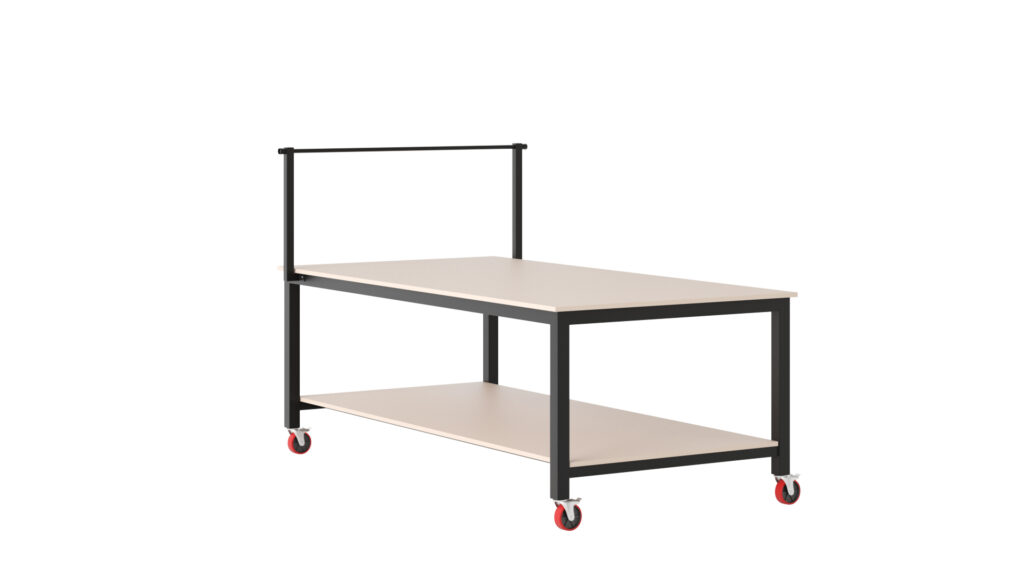
Wooden Workbench
A wooden workbench, especially one made from hardwood like oak or maple, is strong but more prone to wear and tear. It can absorb impact better than metal, reducing noise and vibration, which is beneficial for woodworking and delicate assembly work. However, wood is susceptible to moisture damage, warping, and dents. Without regular maintenance, such as sealing or oiling, a wooden bench can deteriorate over time, particularly in humid or damp environments.
Longevity Considerations
A metal workbench can last for decades with minimal upkeep, making it a cost-effective long-term investment. In contrast, a wooden workbench requires ongoing maintenance to prevent damage from moisture, insects, or heavy impact. If properly cared for, a solid hardwood workbench can also last many years, but it will generally show signs of wear sooner than a metal alternative.
Stability and Weight Capacity
Metal Workbench
A metal workbench is designed to support high weight loads, making it ideal for workshops dealing with heavy machinery, tools, and industrial equipment. Steel-framed workbenches can handle extreme pressure without bending or breaking, making them a reliable choice for demanding environments such as manufacturing plants and automotive workshops. However, metal benches can be prone to shifting or sliding on smooth floors, which is why many models include anti-slip feet or bolting options for added stability.
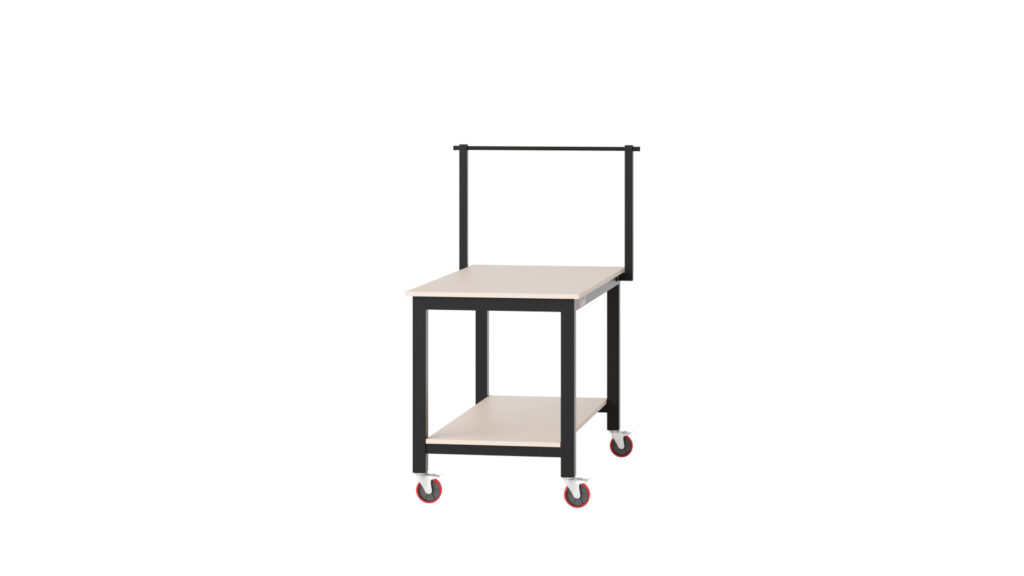
Wooden Workbench
A wooden workbench distributes weight evenly across its frame, reducing movement and providing a stable surface for precision tasks. This makes it particularly useful for woodworking, crafting, and delicate repairs. The natural weight of solid hardwood adds to its stability, but excessive force or heavy loads can cause sagging over time. Additionally, wooden workbenches are less likely to conduct electricity, making them safer for electrical work compared to metal alternatives.
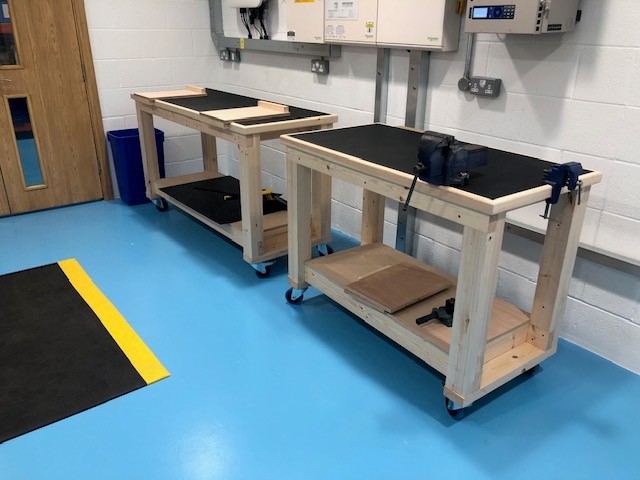
Floor Stability Considerations
While wooden workbenches sit firmly on most surfaces, metal workbenches may need to be secured to prevent movement. Some metal models come with adjustable feet or rubber grips to improve stability. In high-vibration environments, such as machine shops, bolting a metal workbench to the floor is often recommended to prevent shifting during use.
Maintenance and Upkeep
Metal Workbench
A metal workbench is generally low-maintenance. Steel and aluminium models are resistant to most forms of damage, including scratches, dents, and moisture-related issues. However, if exposed to damp conditions, some metals—particularly untreated steel—can develop rust over time. Many workbenches come with powder-coated or galvanised finishes, which provide a protective barrier against corrosion. Regular cleaning with a damp cloth and occasional lubrication of moving parts, such as drawers or height-adjustable mechanisms, is usually sufficient to keep a metal workbench in top condition.
Wooden Workbench
A wooden workbench requires more upkeep to maintain its structure and appearance. Wood is vulnerable to moisture, leading to warping, cracking, or mould growth if not properly sealed. Applying oil, wax, or varnish helps protect the surface and extends its lifespan. Wooden workbenches are also prone to scratches and stains, especially in heavy-use environments. Repairing minor damage is possible by sanding and refinishing the surface, but excessive wear can require replacement of parts over time.
Long-term Maintenance Costs
A metal workbench has lower maintenance costs over time, as it does not require frequent treatments or repairs. A wooden workbench, while durable, can incur ongoing expenses in the form of sealing, refinishing, or even replacing damaged sections. For those looking for minimal upkeep, a metal option is often the better investment.
Cost and Affordability
Initial Investment
A metal workbench typically costs more upfront due to the materials and manufacturing processes involved. Steel and aluminium models, especially those designed for industrial use, often come with reinforced frames, built-in storage, or height-adjustable features, increasing their price. Wooden workbenches, particularly those made from plywood or softwood, tend to be more budget-friendly, although high-quality hardwood models can be expensive.
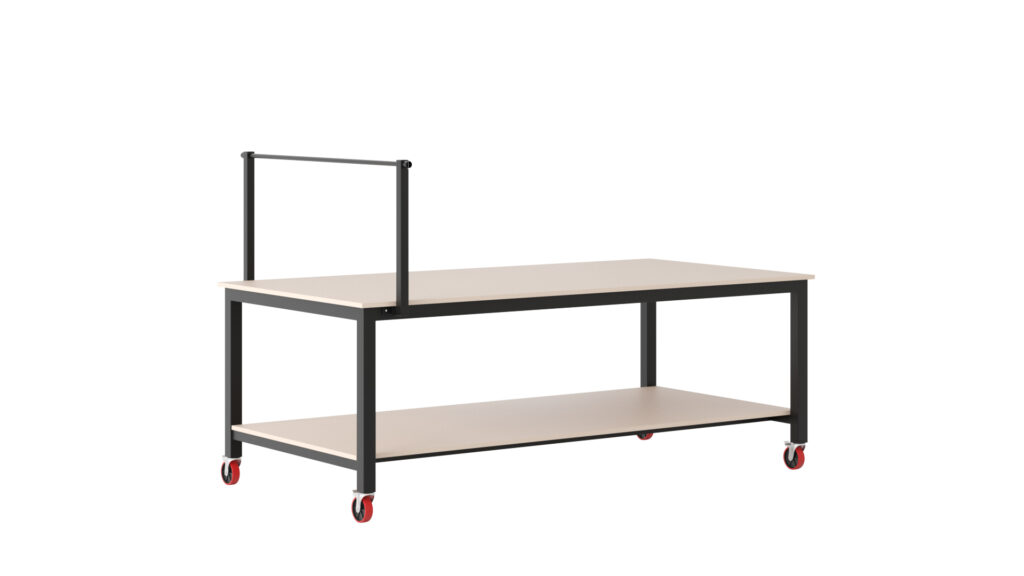
Long-term Value
While wooden workbenches have a lower initial cost, they may require frequent repairs or refinishing, adding to long-term expenses. A metal workbench, by contrast, is a one-time investment that lasts for decades with minimal upkeep. Industrial buyers often favour metal due to its long lifespan and ability to withstand heavy use without degradation.
Budget Considerations
For home users and hobbyists, a wooden workbench can be a cost-effective solution, especially for woodworking or light DIY tasks. However, for professionals and industries requiring maximum durability, the higher initial cost of a metal workbench is justified by its reliability and lower maintenance requirements. In environments where stability and longevity are crucial, metal workbenches offer better value in the long run.
Best Use Cases: Industrial vs. Home Workshops
The ideal choice between a metal workbench and a wooden one depends largely on the intended use. Each type has advantages suited to specific environments, from heavy-duty industrial applications to precision work in home workshops.
Metal Workbenches
A metal workbench is the go-to choice for industrial settings where durability, load capacity, and resistance to wear are essential. These benches are commonly found in:
- Manufacturing and assembly lines – Supporting heavy machinery and tools.
- Automotive repair and mechanical work – Handling engines, transmissions, and large tools.
- Welding and metal fabrication – Resistant to heat and sparks, making them ideal for high-temperature work.
- Laboratories and electronics – Non-porous surfaces prevent contamination and allow for easy sanitisation.
In high-intensity environments, a metal workbench ensures stability and longevity, making it a preferred choice for professionals.
Wooden Workbenches
For precision work, woodworking, and lighter tasks, a wooden workbench offers a stable, vibration-absorbing surface. Common applications include:
- Carpentry and joinery – Providing a sturdy yet non-damaging surface for cutting and assembling wood.
- DIY and crafting – Suitable for home workshops where noise and impact reduction are important.
- Jewellery making and delicate repairs – The softer surface prevents damage to small components.
Environmental and Sustainability Factors
Sustainability is an increasing concern in modern manufacturing, and choosing between a wood vs metal workbench involves considering their long-term environmental impact.
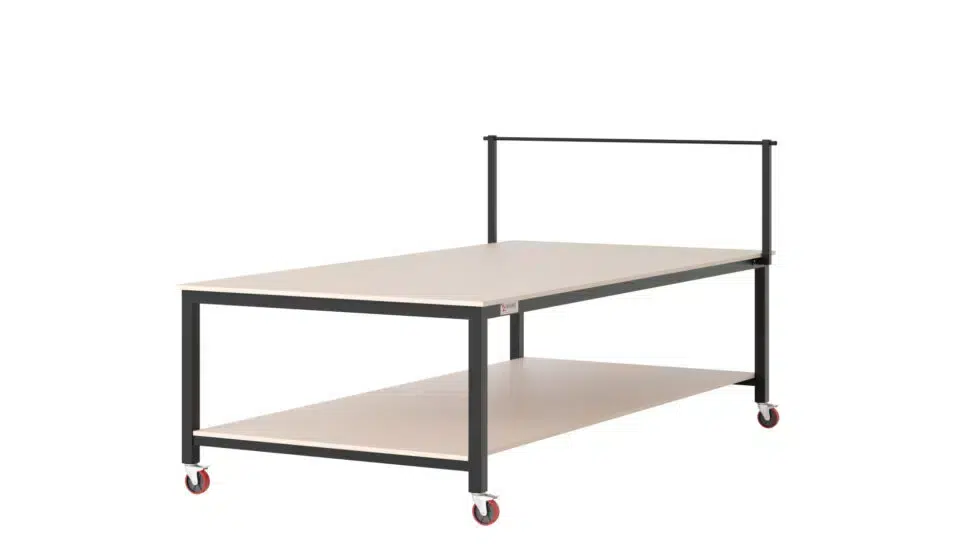
Wooden Workbenches
Wooden workbenches are eco-friendly when sourced from responsibly managed forests. Hardwoods like maple and oak, when certified by organisations such as the FSC (Forest Stewardship Council), ensure that logging is sustainable. However, excessive demand for wood contributes to deforestation, and the need for maintenance products such as varnish or sealants can introduce additional environmental concerns. That said, wood is biodegradable and can be repurposed or recycled at the end of its lifespan.
Metal Workbenches
A metal workbench is highly durable and often made from steel or aluminium, both of which are recyclable. However, metal production requires significant energy and resources, leading to a higher carbon footprint during manufacturing. Despite this, the longevity of metal workbenches reduces waste, and recycling metal components at the end of their use can help mitigate environmental impact.
Which is More Sustainable?
Wood is often considered the greener choice when sourced responsibly. However, metal workbenches, due to their longevity and recyclability, can also be a sustainable option when properly managed. The best choice depends on lifecycle considerations—if a wooden workbench needs frequent replacement, a single long-lasting metal workbench may ultimately have a lower environmental impact.
Latest Trends and Innovations in Workbenches
Workbenches have evolved beyond basic work surfaces, incorporating modern features to improve efficiency and durability. Recent innovations cater to both industrial and home users, making wood vs metal workbench comparisons more relevant than ever.
Smart Workbenches
Many modern metal workbenches and some high-end wooden models now feature built-in power outlets, USB ports, and integrated lighting. This is particularly useful in workshops where multiple power tools or electronic devices are used, reducing the need for external power strips and improving workflow.
Adjustable and Modular Workbenches
Height-adjustable workbenches, particularly in industrial settings, allow users to customise their workspace for ergonomic comfort. Some models have modular components, enabling users to switch between metal and wooden tops, add storage, or expand the work area as needed. These are popular in shared workspaces and workshops with varied tasks.
Enhanced Durability Coatings
New protective coatings and treatments are improving the longevity of both metal and wooden workbenches. Powder-coated steel resists corrosion, while advanced sealants for wood prevent moisture damage and extend lifespan. Anti-scratch and heat-resistant surfaces are also becoming standard in industrial bench models, ensuring workbenches last longer even in harsh environments.
Evolving Workplace Needs
With automation and precision work increasing, workbenches are adapting to include features like vibration-dampening materials, magnetic surfaces for small metal parts, and reinforced frames for robotic assembly stations. These innovations ensure workbenches remain functional in modern workshops.
Which One Should You Choose?
Choosing between a metal workbench and a wooden one depends on durability, cost, and intended use. Metal workbenches are ideal for industrial and heavy-duty tasks, offering strength and low maintenance. Wooden workbenches suit woodworking and crafting, absorbing vibrations but requiring more upkeep. Hybrid options combine metal frames with wooden tops for versatility. The best choice depends on workspace needs, budget, and maintenance preferences. Assessing these factors ensures a practical, long-term investment.
